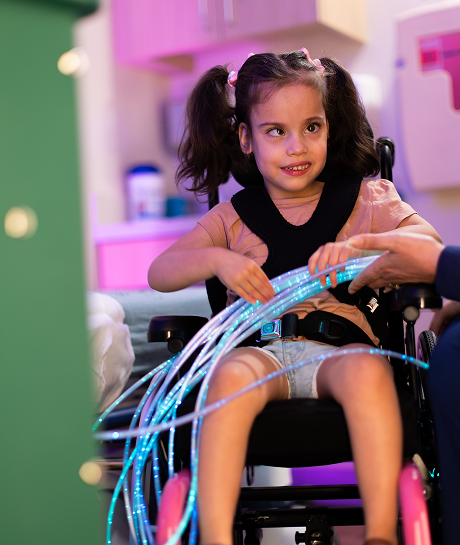preparing for an electroencephalogram (EEG) test
Follow the steps on this page to help prepare for your child’s EEG test. If you have any questions or concerns, please do not hesitate to call us at 937-641-3080, option 1. Thank you for trusting us with your child’s care!
For simplicity, we will use “your child” to refer to the patient. We know that many of our patients are able to understand and follow these instructions on their own. Using one reference term, rather than “you/your child” throughout will make the information easier to read.
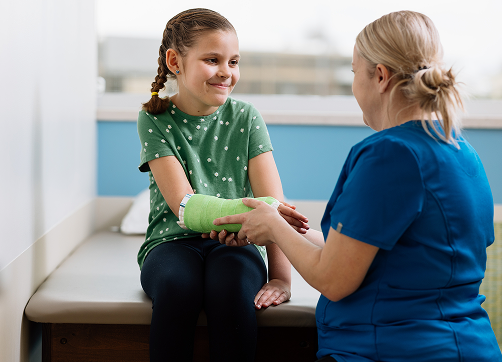

what is an EEG?
An EEG (electroencephalogram) is a test that records the electrical activity of the brain, providing important information about brain function. It is a painless procedure used to help diagnose and manage neurological conditions.
how is an EEG done?
During an EEG, 27 small medal discs, called electrodes, are attached to your child’s scalp using a special gel and paper tape. These electrodes detect electrical activity in the brain, which is recorded for a neurologist to review.
We offer three types of EEG tests:
- Routine EEG: This test, performed in the outpatient lab, typically takes 60 to 90 minutes. In some cases, an extended EEG may be required, which takes longer but follows the same procedure.
- Ambulatory EEG: Your child will visit the hospital to have the electrodes attached but will wear the EEG home for 24 to 72 hours. This allows for monitoring in your child’s regular environment.
- Epilepsy Monitoring Unit (EMU): This test is done during an inpatient stay at the hospital. Your child will be monitored continuously in the Epilepsy Monitoring Unit.
The type of EEG that is right for your child will be determined by their neurologist.
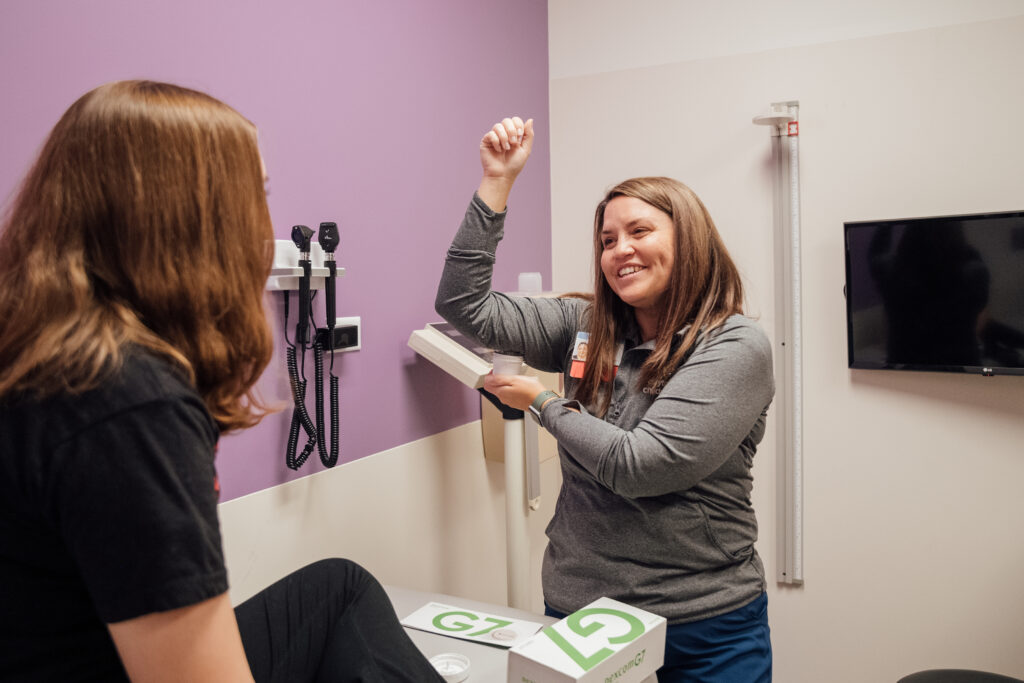
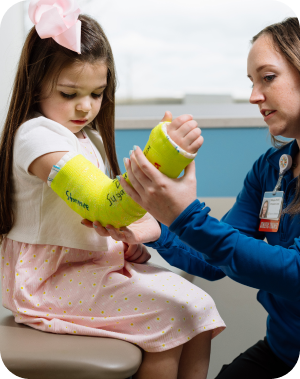
how do I prepare my child for their EEG?
Regardless of the type of EEG, here are general steps to prepare:
- Other children: Please arrange for other children to stay at home, as the testing environment needs to remain quiet.
- Hair care: Wash your child’s hair thoroughly the night before or the morning of the test. The scalp must be clean, free of oils and dry.
- Food: Make sure your child eats a regular meal or snack before the tests unless advised otherwise. Avoid caffeine and chocolate for 24 hours prior to the tests, as they can affect the results.
- Medications: Continue to give your child their usual medications unless directed otherwise by their neurologist.
- Comfort items: Bring comforting items like a bottle, blanket or a favorite stuffed toy to help your child relax.
Additional preparation for specific EEG types:
- For routine EEG:
- Sleep deprivation: Your child needs to be very tired to achieve a natural sleep. Please do not allow your child to sleep in the car on the way to the hospital.
- Children under 2 years of age should stay awake for four hours leading up to the test.
- Children ages 2 to 5 years old should go to bed one to two hours later than usual and be awakened one to two hours earlier than usual. Allow no nap prior to the test.
- Children over 5 years of age may sleep from 11 pm the night before until 5 am the day of the test. Allow no nap prior to the test.
- Sleep deprivation: Your child needs to be very tired to achieve a natural sleep. Please do not allow your child to sleep in the car on the way to the hospital.
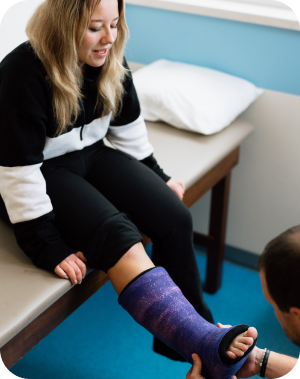
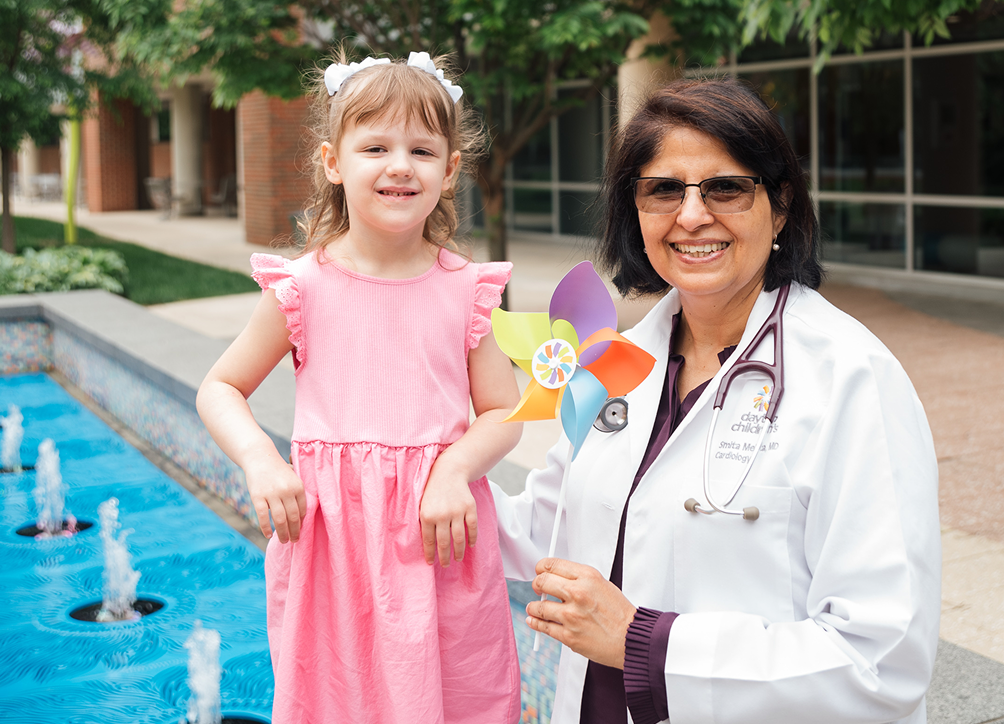
- For ambulatory EEG:
- Have your child wear a shirt or top that fastens up the front, nothing that is pulled over the head. This will make it easier for them to change their clothes during the study.
- Write on the diary pages the times when your child eats, takes medications, goes to bed and wakes up. Use your cell phone for this time as it is more accurate than other clocks.
- Push the button for any event or spells your child has and write the time and a brief description of the event on the diary page.
- We ask that your child avoid vigorous activities like riding their bike or jumping on a trampoline. This could cause injury to your child or damage the recorder.
- Avoid chewing gum while wearing the recorder. The chewing makes it difficult for the recorder to get a good-quality record of your child’s brain activity.
- Encourage your child to drink extra water while wearing the headset. Staying hydrated will reduce possible skin irritation from the electrodes.
- Your child can take off the backpack at night and place it securely by their pillow so they can sleep comfortably.
- If your bedrooms are not close together or your child is very young, have them sleep in the same room with you so you can keep an eye on them during the night. This is important to do if your child is having events in their sleep.
- Your child cannot take a bath or shower while wearing the headset and recorder. Please give them a sponge bath, if needed.
- For the Epilepsy Monitoring Unit (EMU):
- Pack for an overnight stay. Bring books, toys or electronics to keep your child entertained during their stay. Since your child will be monitored continuously, comfort is key.


how should I take care of my child after an EEG?
Once the EEG is complete:
- Hair care: The paste and gel will be removed after the test, but you may still find some residue in your child’s hair. Feel free to shampoo their hair when you get home.
- Skin care: If there is any redness or irritation on your child’s skin where the electrodes were placed (especially on the forehead or behind the ears), keep the area clean and apply an antibiotic ointment if necessary.
- If sedation was used: If your child received sedation, you will be given additional instructions before leaving the hospital.
getting test results
- Neurologist appointment: If you have a follow-up appointment with your child’s neurologist within a few weeks, you will receive the results at that time.
- No follow-up appointment: If the study was ordered by your child’s primary care provider, or you do not have an upcoming appointment, you can call the provider one week after the study for results.

connect with a pediatric neurologist
Get care from Dayton Children’s neurology team. Whether it’s frequent headaches, seizures or difficulty with movement, we’ll help you get the answers and support you need. Schedule an appointment online or call 937-641-4000.
